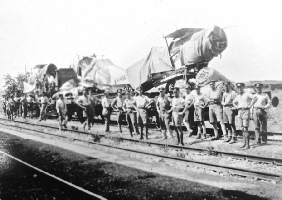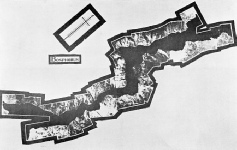From November to the middle of March  the conditions underfoot were very difficult and temperatures plummeted. The airfield at San Stefano was badly affected and on numerous occasions many aircraft had to be manhandled to the take off point and again when they landed.
the conditions underfoot were very difficult and temperatures plummeted. The airfield at San Stefano was badly affected and on numerous occasions many aircraft had to be manhandled to the take off point and again when they landed.
The political stalemate continued throughout the winter months as the squadron continued with its regular reconnaissance patrols and training flights. The resumption of the Lausanne peace talks on 23 April 1923 coincided with improving weather, which allowed the RAF squadrons to conduct more intensive bombing, and gunnery training flights, the relevance of which was not lost on the Turks. A long succession of diplomatic talks took place during the summer resulting in the Lausanne Treaty signed on 23 August. The following day orders were issued for the RAF to evacuate and flying came to an end.
For the RAF, still only f ive years old, the ‘Chanak Crisis’ was the first post-
ive years old, the ‘Chanak Crisis’ was the first post-
Graham Pitchfork
Naval 8 -



The Chanak Crisis 1922 -





